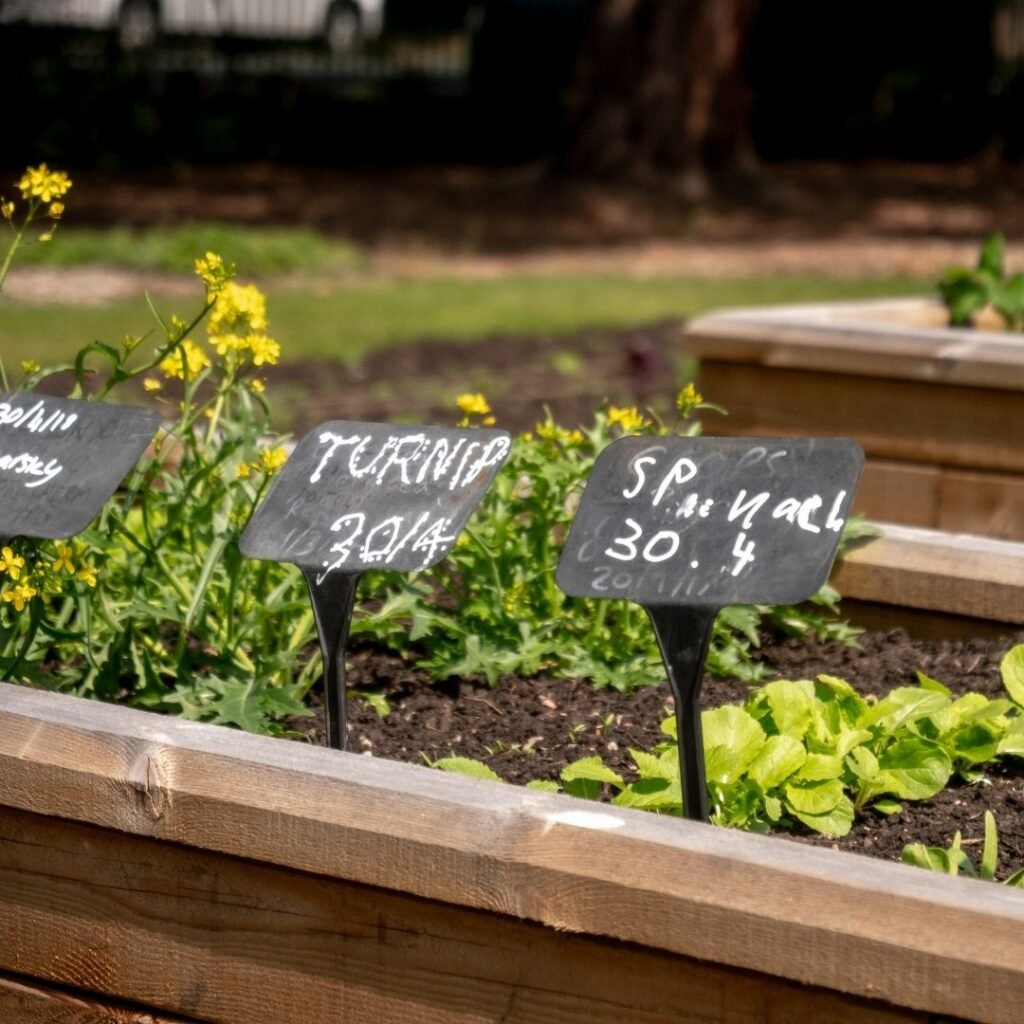Growing trees in raised beds might sound a bit odd at first, but trust me, it’s totally doable and can actually be super beneficial for your garden! I’ve helped many gardeners successfully plant trees in raised beds, and I’m excited to share everything I’ve learned with you
Why Consider Planting Trees in Raised Beds?
Listen, I get it – you might be wondering if this is really a good idea. Here’s why it’s actually pretty awesome:
- You’re the boss of your soil! No more dealing with crummy ground soil
- Water drains better (goodbye, root rot!)
- Easier maintenance – less bending and stooping
- Perfect for areas with poor native soil
- Helps prevent soil compaction
- Makes it easier to control weeds
Choosing the Right Trees
Not every tree will work in a raised bed. Here are some trees that’ll love living in your raised bed:
Best Options:
- Dwarf fruit trees
- Ornamental trees like Japanese maples
- Eastern redbud
- White fir
- Japanese lilac
- Flowering crabapples
Size Matters!
For a typical dwarf tree (growing about 9 feet tall) you’ll need
- Bed width: At least 6 feet
- Bed height: 10-12 inches minimum
- No bottom (let those roots grow down!)
Building Your Raised Bed
Materials You’ll Need:
- Sturdy wood, stone, or metal for walls
- Gravel for drainage
- Quality topsoil
- Compost
- Mulch
Construction Tips:
- Skip the bottom – trees need deep root growth
- Add a gravel layer first (about 2-4 inches)
- Use short wall sections to let roots spread
- Make sure it’s at least 10 inches deep
- Width should be proportional to tree’s mature canopy
The Perfect Soil Mix
You want your tree to thrive right? Here’s my tried-and-true soil recipe
- Base: Good quality topsoil
- Add: Peat, bark, and sand mixture
- Include: Organic compost
- Top layer: Mulch for moisture retention
Pro tip: Test your soil pH! Most trees like neutral pH, but you can adjust with lime if needed.
Planting Process
Step-by-Step Guide:
-
Prep the area:
- Break up ground soil beneath
- Add gravel layer
- Fill with soil mix
-
Plant the tree:
- Dig hole in raised bed
- Position tree straight
- Plant slightly above grade
- Water thoroughly
-
Support system:
- Stake if needed
- Add mulch (keep away from trunk)
- Install irrigation if necessary
Ongoing Care
Taking care of trees in raised beds needs a bit more attention than ground-planted trees. Here’s what you gotta do:
Watering:
- Check moisture frequently
- Water deeply when top few inches are dry
- Pay extra attention during first growing season
Seasonal Care:
- Add mulch in winter for root protection
- Monitor for drainage issues
- Expand beds as tree grows
- Fertilize as needed
Common Challenges and Solutions
Sometimes things don’t go as planned. Here’s how to handle common issues:
Drainage Problems:
- Add more gravel
- Create drainage channels
- Consider raising bed height
Root Growth:
- Remove sections of bed walls as needed
- Plan for bed expansion
- Monitor for root binding
My Personal Tips
After helping lots of folks with their raised bed trees, here’s what I’ve learned:
- Start smaller than you think – you can always expand
- Don’t skimp on soil quality
- Monitor closely in first year
- Be patient – trees take time to establish
Final Thoughts
Planting trees in raised beds might take a bit more planning, but it’s totally worth it! Just remember to:
- Choose appropriate trees
- Build strong, well-draining beds
- Use quality soil
- Monitor and maintain regularly
And hey, if you’re still unsure, start with one tree and see how it goes. You might be surprised at how well it works out!
Remember, gardening is all about learning and experimenting. Sometimes things work great, sometimes they don’t – but that’s what makes it fun, right? Have you tried growing trees in raised beds before? I’d love to hear about your experience!
Is there something in this article that you’d like me to explain or break down in more depth?
#4 What salads can I grow in raised beds?
You can easily plant salad crops like lettuce, spring onions, and radishes, and they’ll be ready to eat in a few weeks. For bigger plants, like pumpkins or trailing squash, you can grow them at the edge of the bed and train them to grow over the side and around the base of the bed, leaving room for other vegetables to grow in your raised bed. In fact, you can add obelisks, canes and supports to grow runner beans, clinging french beans and cucumbers up; in that way you are growing upwards and saving space in your bed for veggies which will benefit from a little shading in the summer, such as lettuce.
Using WoodBlocX crop protectors with nets is a great way to keep bugs out of your crops while they are growing.


Use raised beds to combat carrot fly
Raised beds provide great protection from carrot fly as plants are raised up above the level the pests fly at.
Dollar Tree x Lowes Vertical Garden! #gardening #explorepage #plants #gardener #gardeningtips #peace
0
